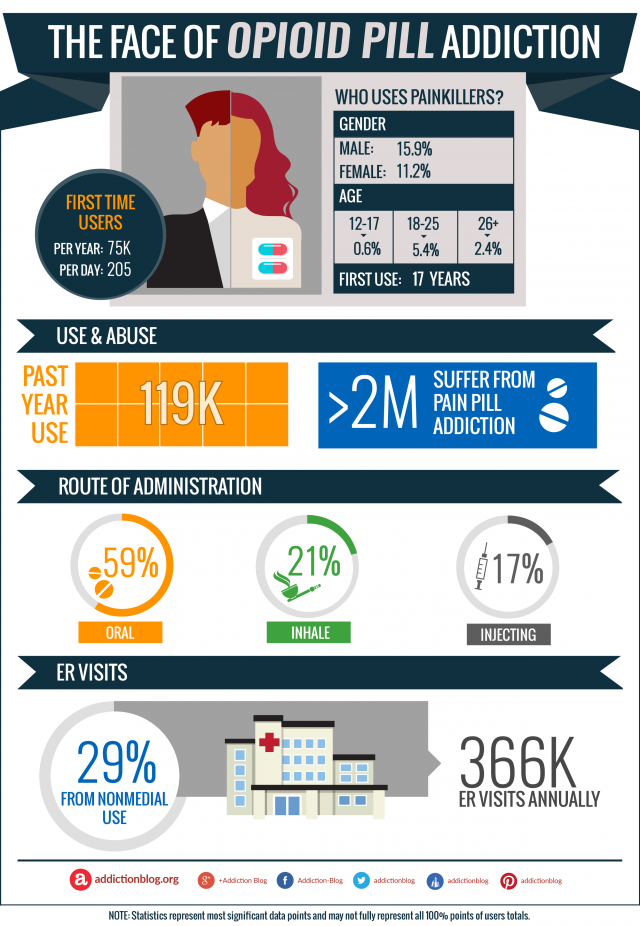America + Painkillers = A rise in addiction
The new epidemic created by the over prescription of opioid pain relievers has everyone talking. While we advocate that painkiller should only be used for pain that is severe and is not helped by other types of painkillers…the reality is that access to pain meds is relatively easy, inexpensive, and creating new addicts every day. In fact, most people do not know that experts advise us NOT to use opioid pills for more than 3 to 4 months, unless you are under direct care of your provider.
Still, doctors keep prescribing and people keep taking all forms of pain pills, such as:

Codeine
Fentanyl
Hydrocodone
Hydromorphone
Meperidine
Morphine
Oxycodone
Tramadol
There were an estimated 2.1 million people in the United States suffering from substance use disorders (SUD) related to prescription opioid pain relievers in 2012, which is why this ‘phenomena’ was named America’s Opioid Crisis. In fact, there are so many Americans using opioids that an estimated 1 out of 5 patients with non-cancer pain or pain-related diagnoses are prescribed opioids in office-based settings.
Who uses opioid pills?
Here are some prescription painkiller-related statistics from the most recent National Survey on Drug Use and Health (NSDUH) from 2014:
- 4.3 million Americans engaged in non-medical use of prescription painkillers within the month prior to being surveyed.
- Approximately 1.9 million Americans met criteria for prescription painkillers use disorder based on their use of prescription painkillers in the year before the survey was conducted.
- 1.4 million people used prescription painkillers non-medically for the first time in the previous year.
- The average age for prescription painkiller first-time use was an estimated 21.2 years.
Who’s most likely to be using opioid pills?
Prescription opioid use varies according to age, gender, and ethnicity, but reaches the highest marks in the following demographics:
- Adults aged 40 years and older are more likely to use prescription opioids than adults aged 20 – 39 years.
- Women are more likely to use prescription opioids than men.
- Non-Hispanic whites are more likely to use prescription opioids than Hispanics. There are no significant differences in prescription opioid use between non-Hispanic whites and non-Hispanic blacks.
How do they obtain the medications?
People who abuse prescription opioids get them through various routes, including:
- Using their own prescriptions – 27%
- From friends or relatives for free – 26%
- Buying from friends or relatives – 23%
- Buying from a drug dealer – 15%
Opioid pill use questions
Do you need information about prescription opioid pill use, or would like to learn how you can safely quit painkillers? Help is available on 1-877-721-6695 anytime, 24 hours a day, 7 days a week.
If you have any further questions about pill use, abuse, or opioid addiction treatment, please feel free to send them to us. Simply post them in the comments section in at the end of the page and we’ll do our best to answer to all legitimate inquiries personally and promptly.
Like our infographics? Please SHARE.








Related Posts